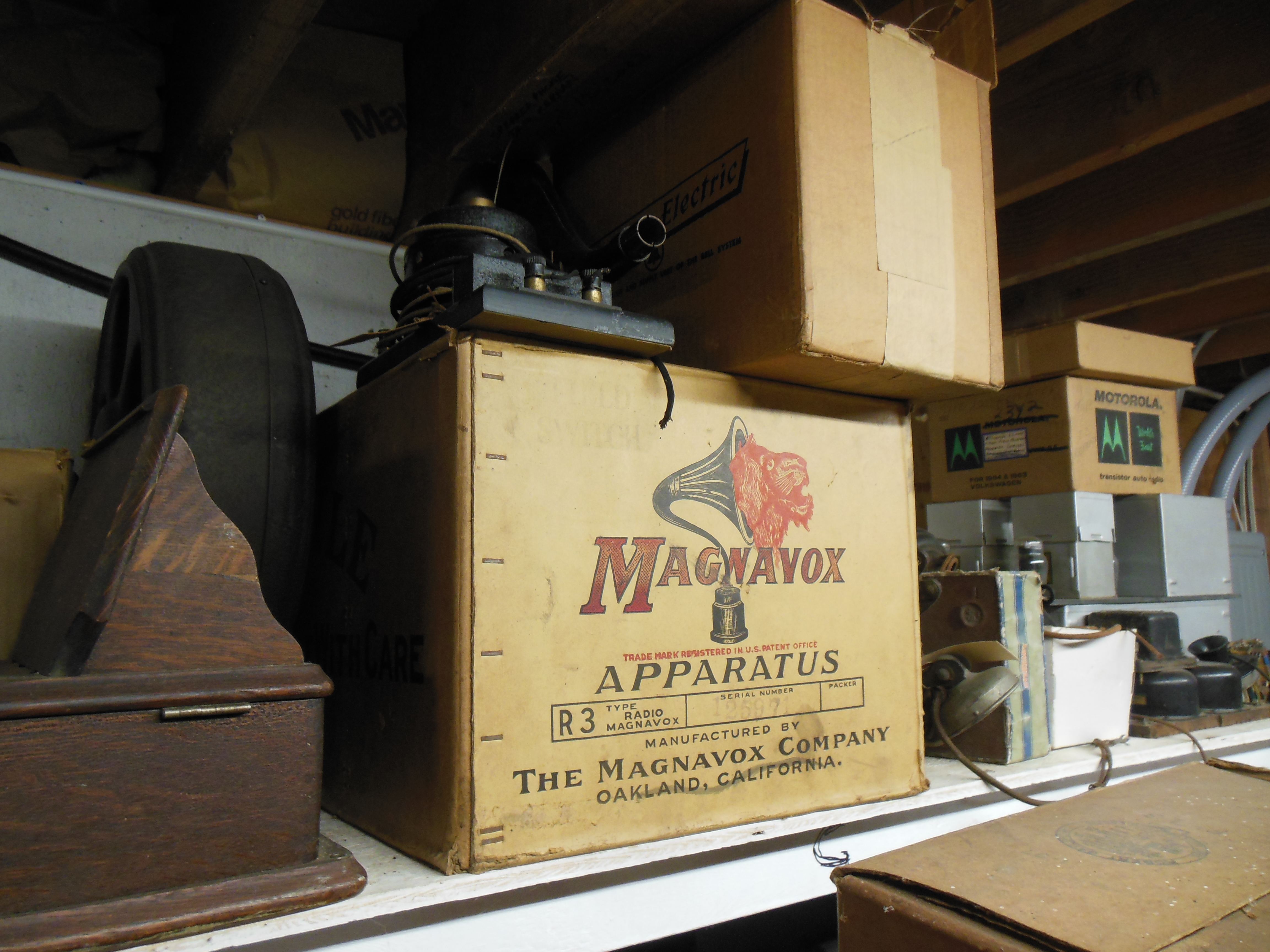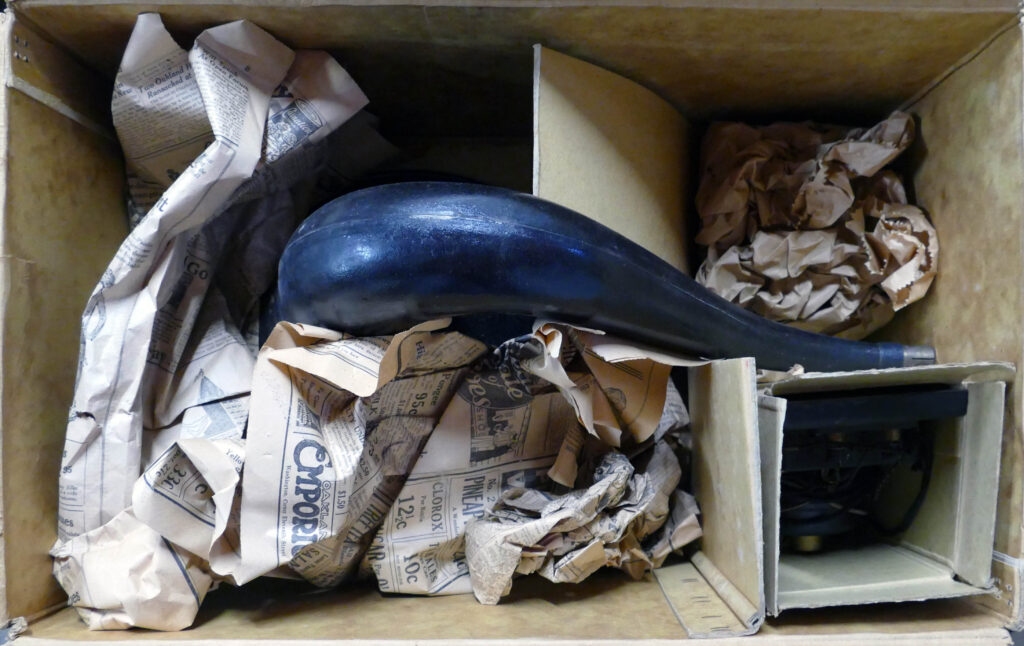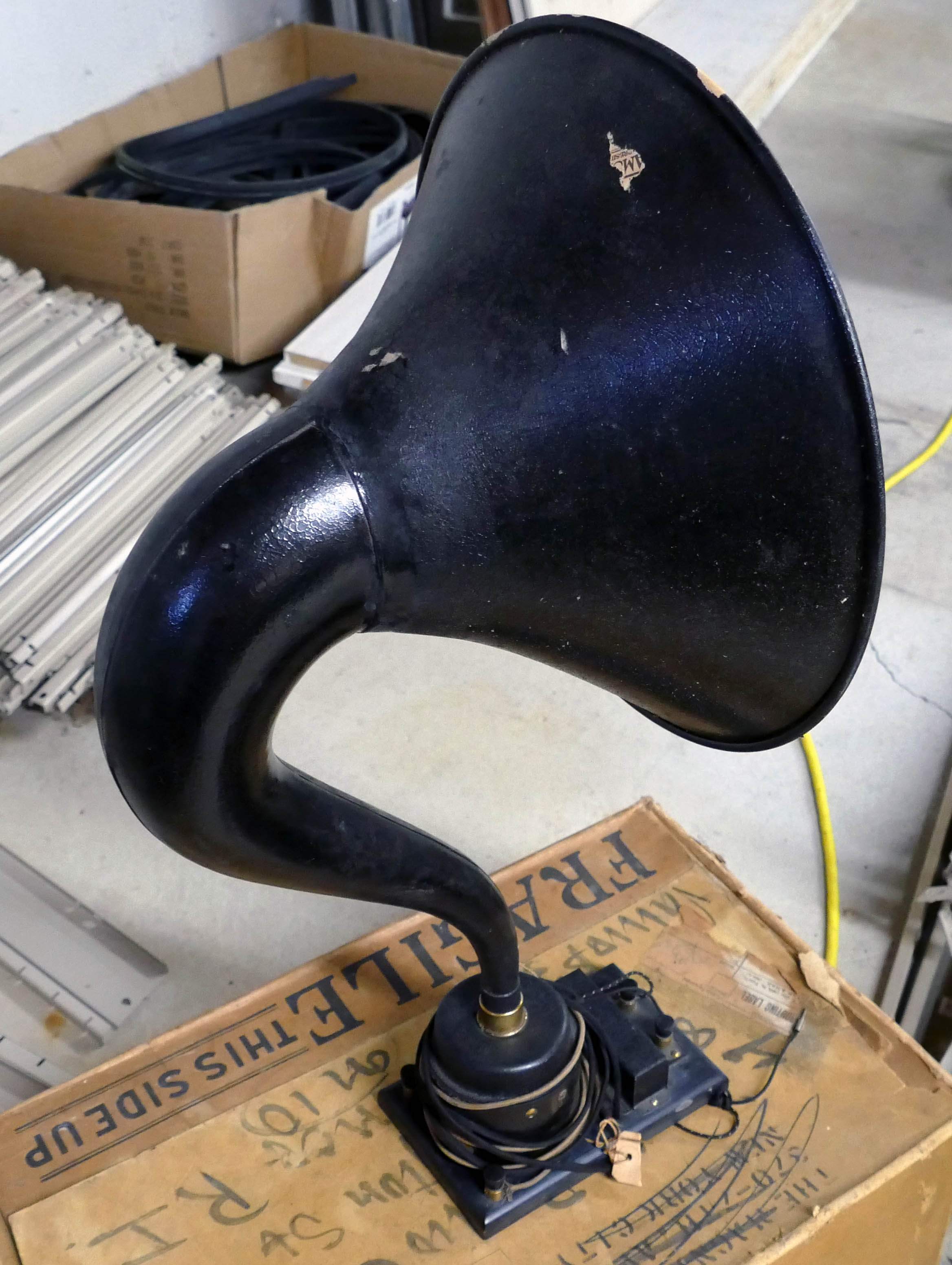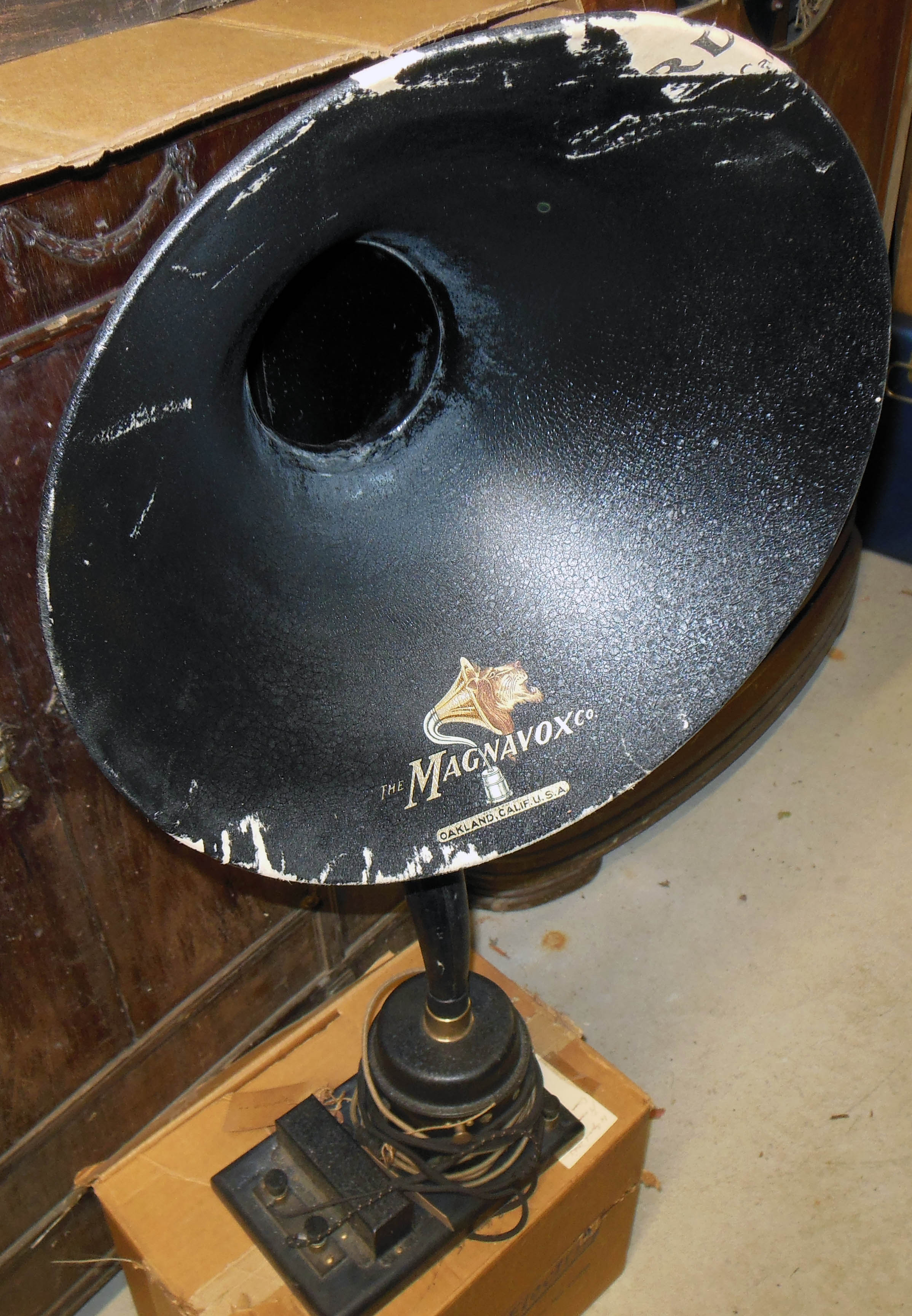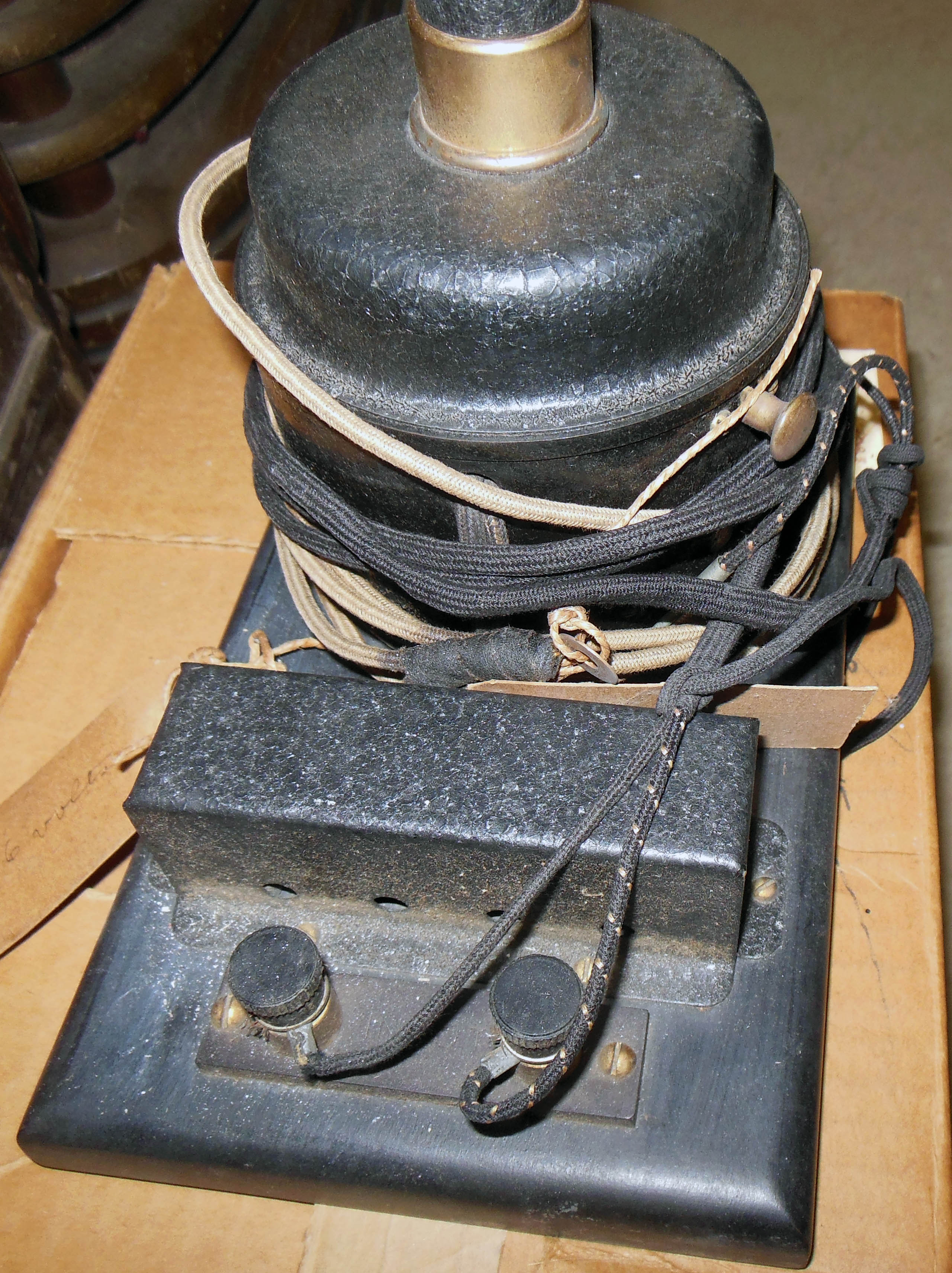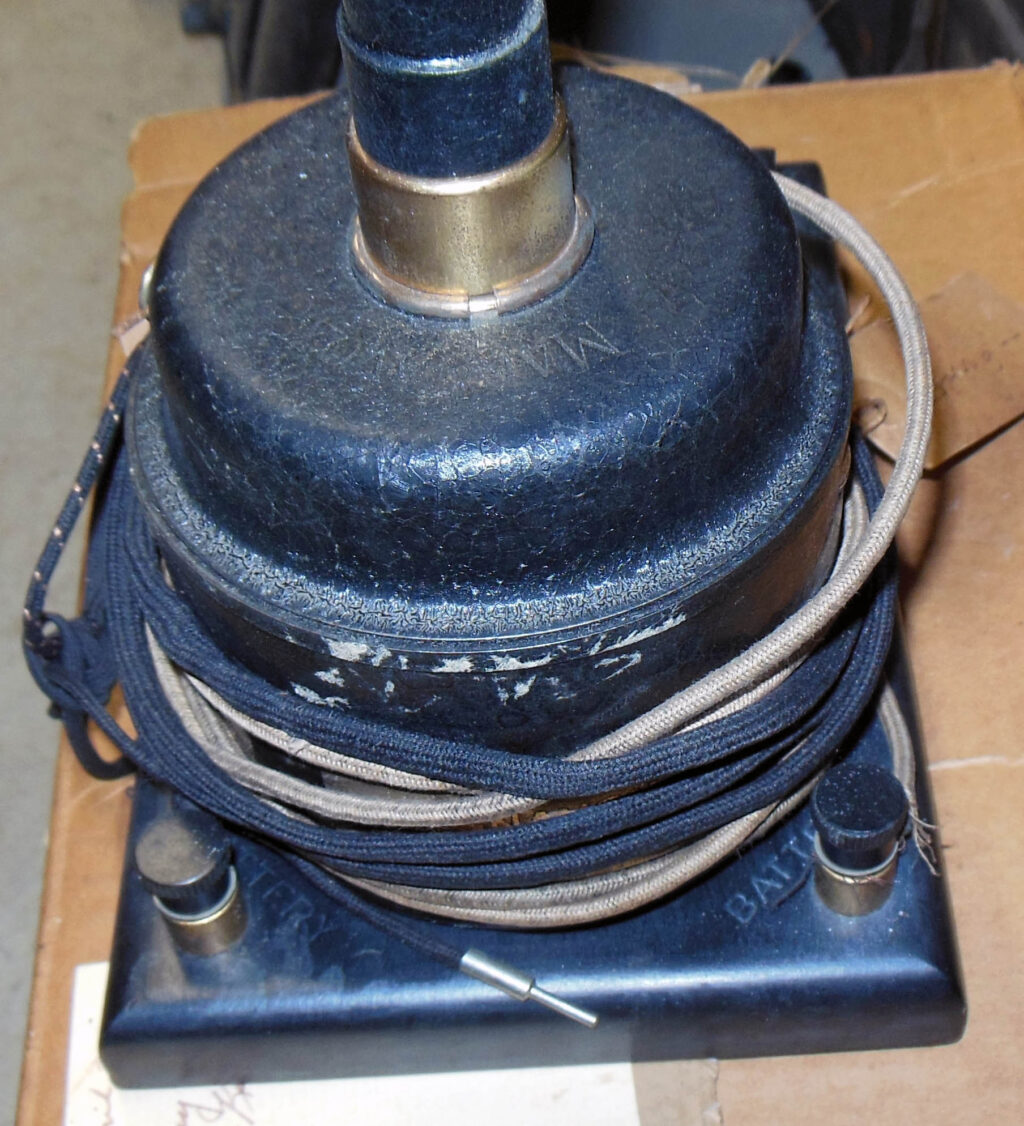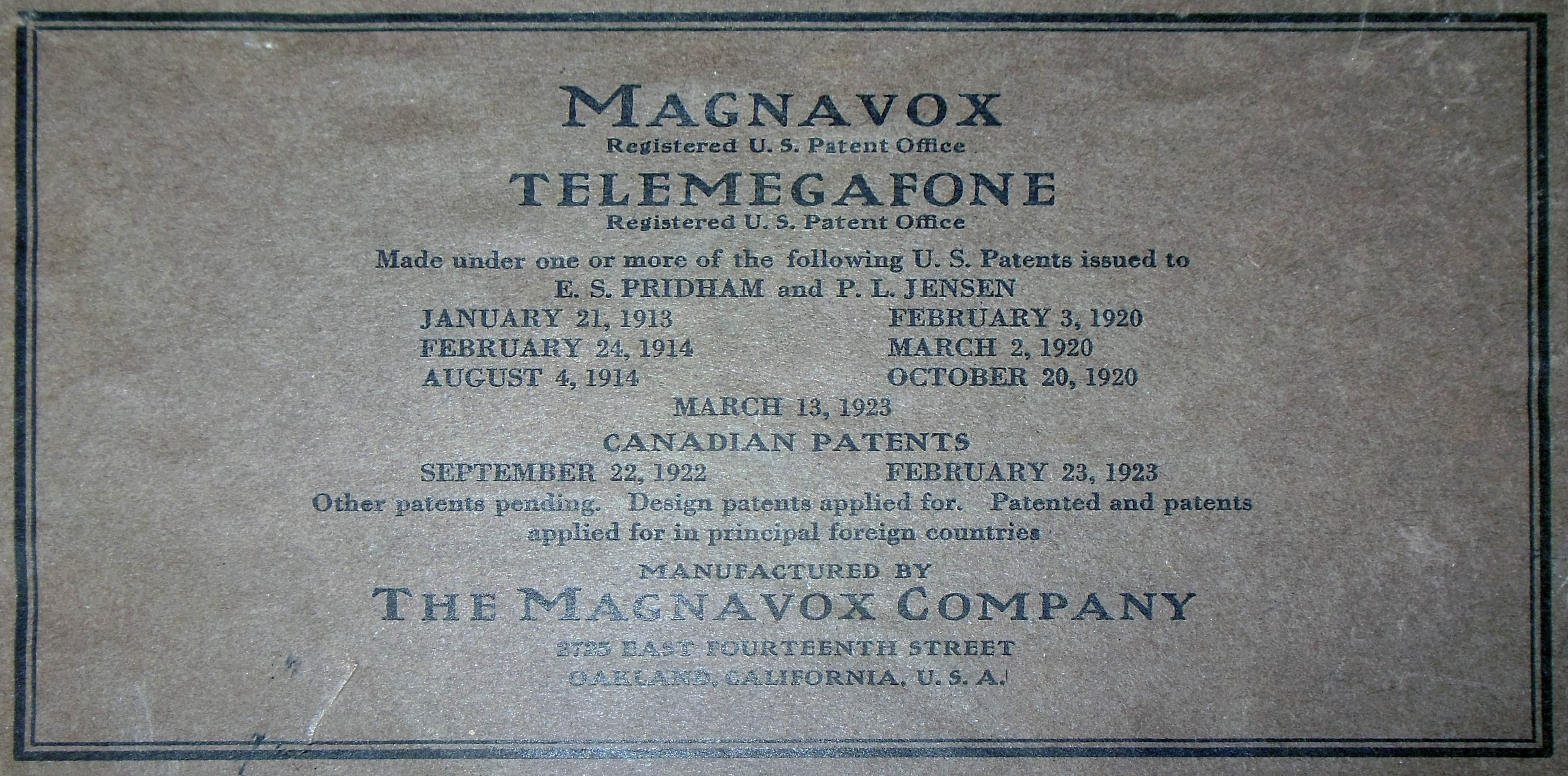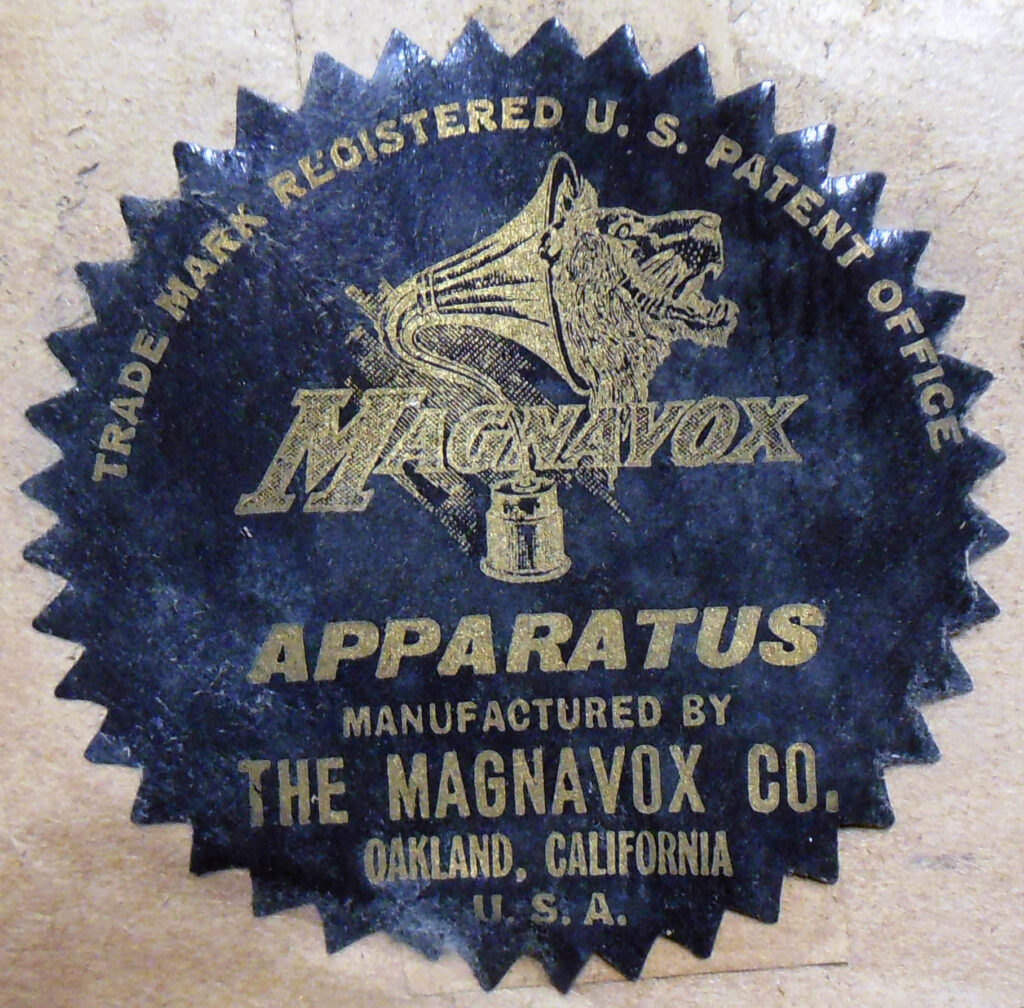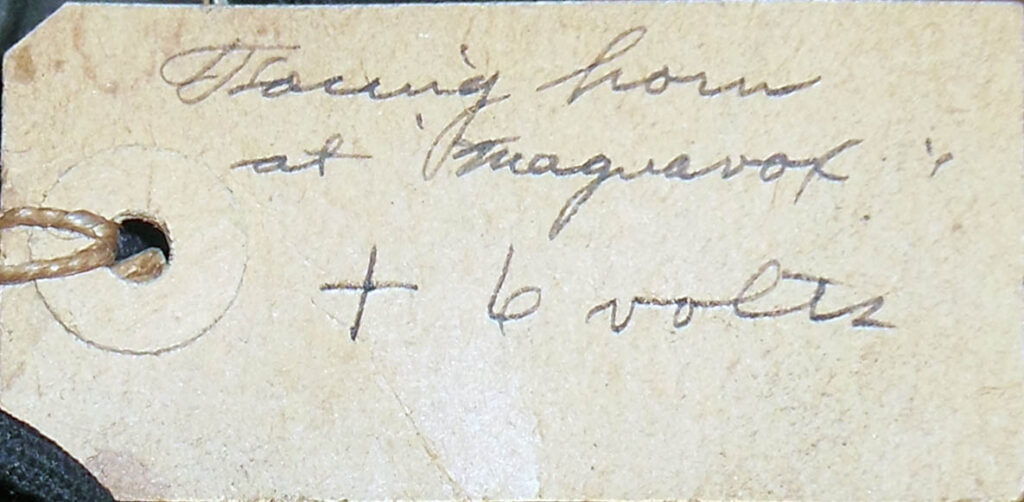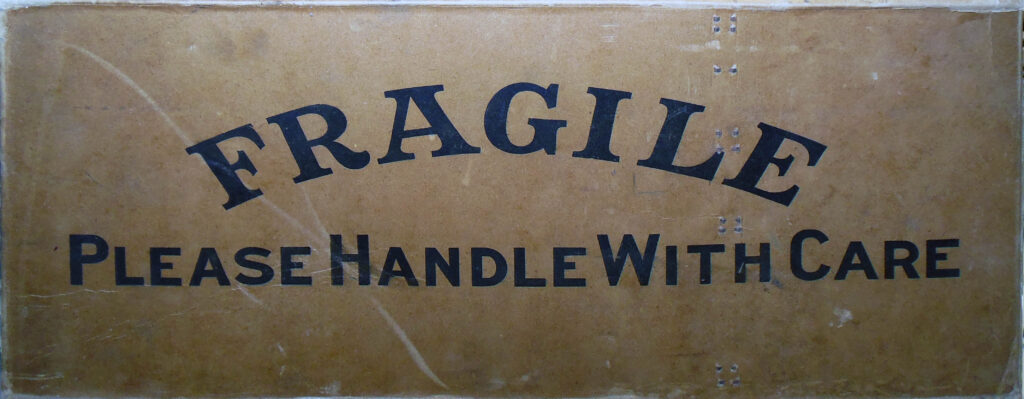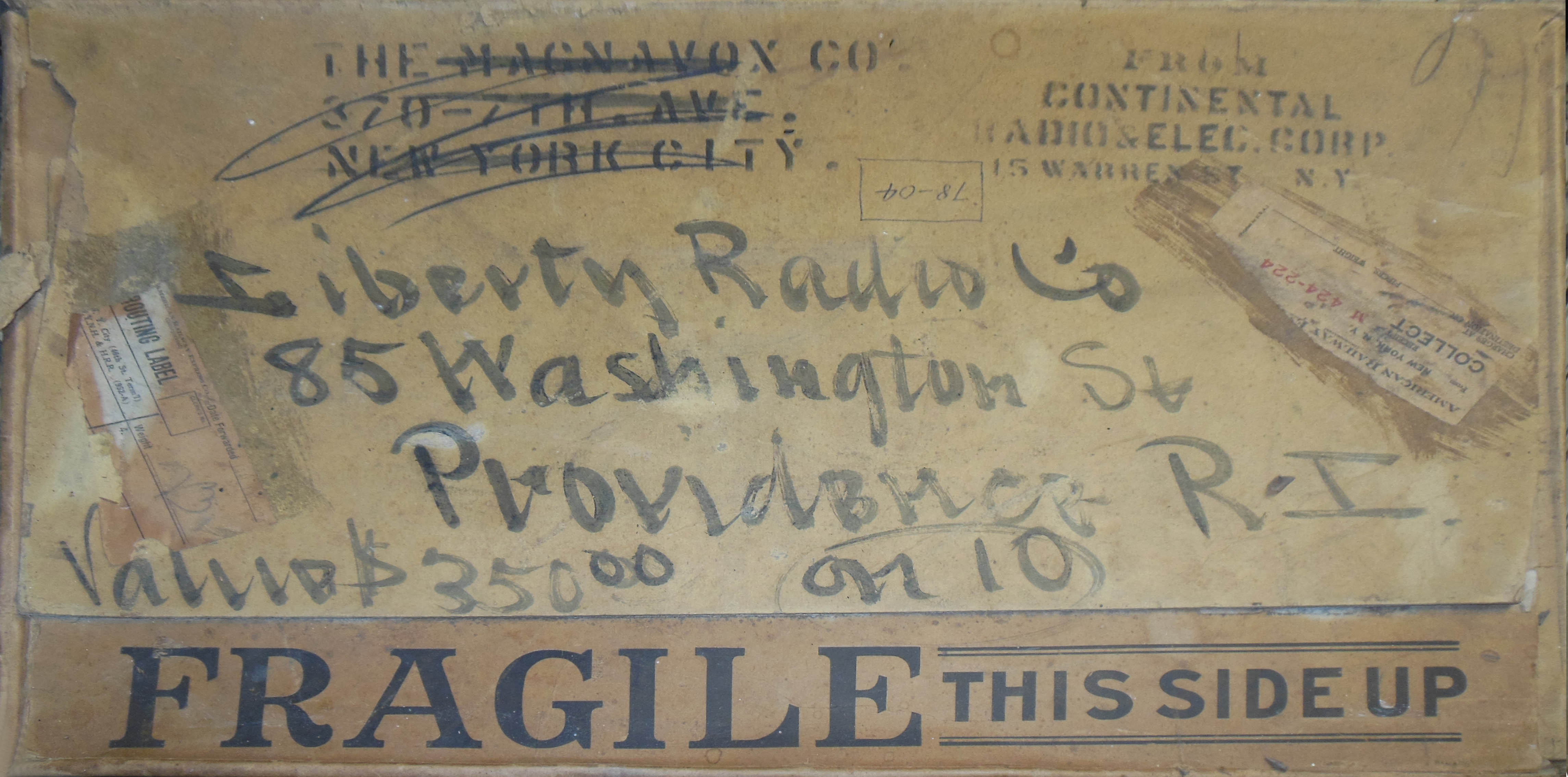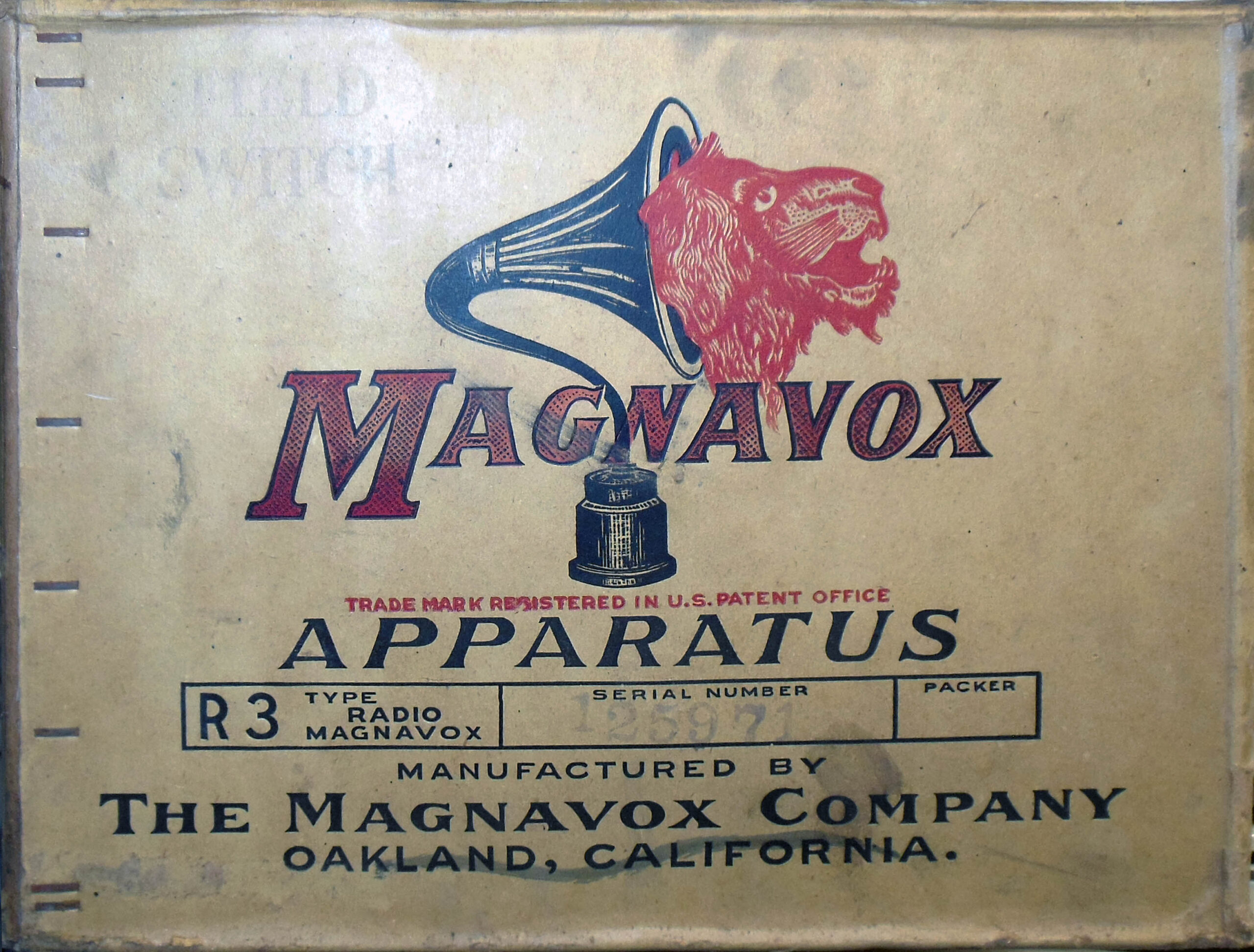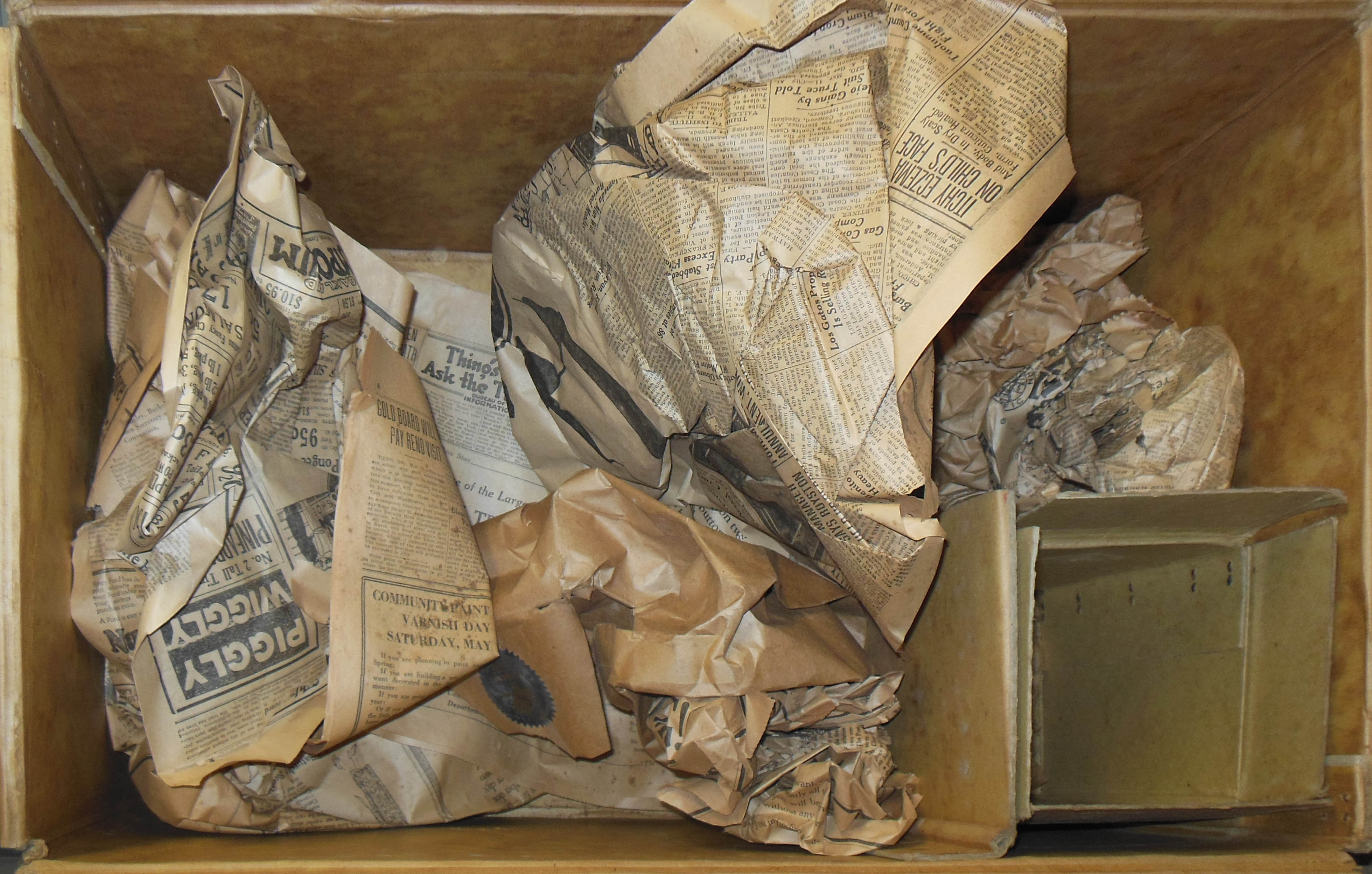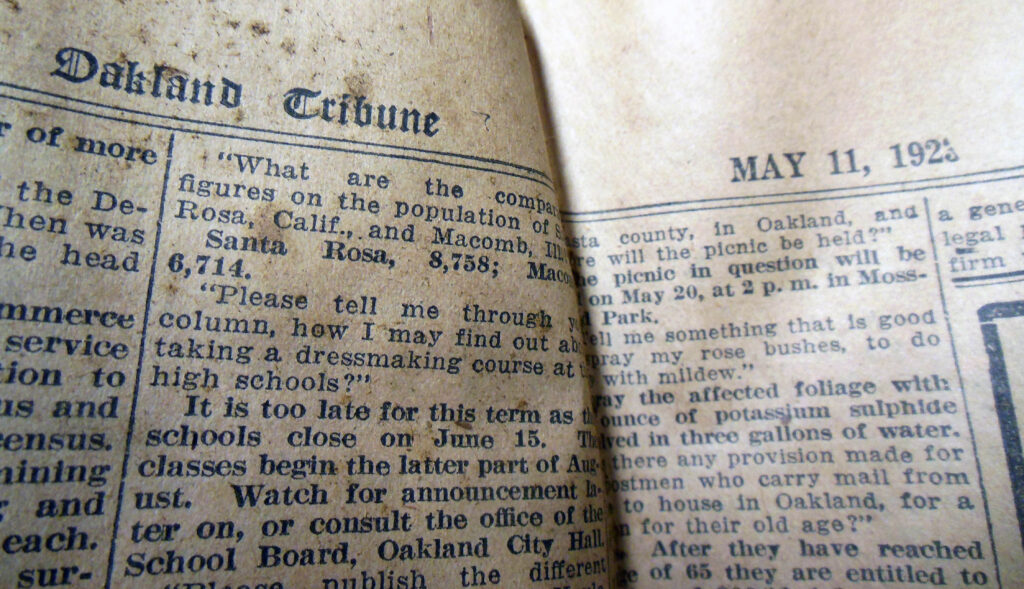Our speaker is in its original box and is in excellent condition except for spots where
some of the text from the newsprint packing material has transferred to the painted
surface of the speaker. The newsprint is from the May, 1923 edition of the Oakland
Tribune. The Magnavox Company was located in Oakland, California.
There is an original Magnavox tag on a section of the wrapping paper found in the
speaker’s shipping box (see photo). There is also a tag attached to the base. Written on
the tag is “+ 6 volts”. This is very important. Most speakers of the early 1920’s consisted
of a large horn with a single hidden headphone earpiece attached to the narrow end. The
headphone diaphragm vibrated weakly to make sound. This speaker has an additional
powered electromagnetic field coil and thus the note that it needs a 6 volt power supply.
Click on any of the images below to see a larger gallery view.
Technical Data:
The oblong box at the base of the speaker is an impedance matching transformer. This speaker actually has a voice coil! Magnavox horn speakers are believed to be the first speaker to employ a voice coil. However the voice coil is attached to a metal diaphragm rather than a paper cone. They were so close to getting it right!
There should be four terminals on the speaker base, two for the signal/radio input and two for the field coil. The field coil requires a 6 volt source supplying 1 Amp. This would kill a battery quickly, so a better idea is to use a dedicated 6 volt power supply for the field coil. No commercially available radio power supply that we are aware of can handle the power demands of the set plus the speaker. Not even the Arbee.
Resources:
-
- Carr, Joseph (1991) Old Time Radios! Restoration and Repair
- Magnavox Wikipedia page with full history: website
- Magnavox R3 Horn Speaker from the 1920’s, demonstration using transistor radio & transformer.
- Magnavox Historical Preservation Association, great history and a project that shows the R3 paired with what Magnavox claimed to be, the first single-dial radio, the Magnavox TRF-5.
- Douglas, Alan (1989). Radio Manufacturers of the 1920’s, Vol. 2, (2nd printing, 1995)
